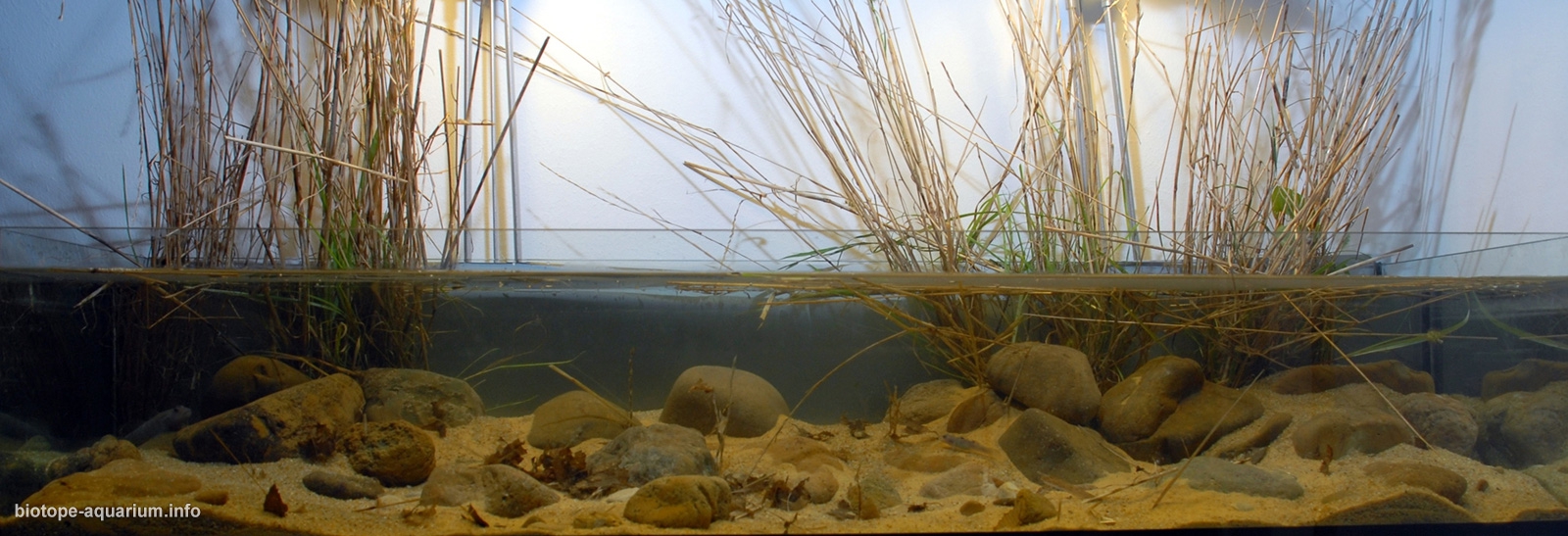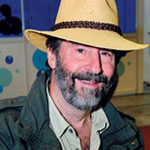Waterhole near Douglas Creek
The 3rd place in the qualifying stage of the Biotope Aquarium Design Contest 2014
![]() Croatia. Bašić Petra
Croatia. Bašić Petra

Volume: 140 L
List of fishes: Chlamydogobius eremius
Biotope description: This south Australian gobies are remarkably well adapted to life in the desert. They inhabit slow-flowing streams, springs, and waterholes in the southern and western Lake Eyre drainage system in South Australia. Flow rate is very slow and water is alkaline and saline. Temperatures vary from 5-43°C and there is little oxygen dissolved. Bottom is rocky and sandy, without plants, just some grasses near edge of pool, where gobies usually dwell.

Petra, who has won last years competition very well deserved, has done again an excellent biotope, very simple, but almost close to the habitat of these tiny gobioids, but for instance there are no leave litter in the desert area where they live, not even close (maybe a few million years ago there were trees). Secondly there is no flow, no water flowing ever (unless it rains like every 10 years or so). This is my 3rd place, because of the mentioned facts (sorry Petra, but these are the facts you should know).

One of the best biotope representations in this competition with a very different look and different inhabitants. This will inspire many fishkeepers for sure.

If you look at this tank you can feel the extreme conditions the gobies often have to cope with. It’s an unusual environment to recreate in aquaria but the result seen here is wonderful. The special character of the habitat is given back in a real good way. A simply nice tank to spend hours with interesting observations.
This layout can be used to exemplify the famous phrase of Mies Van der Rohe, a renowned german architect. “Less is more”. I was perplexed to see how simple a reproduction of a biotope can be. The author used great sensibility not to shock with the excess, but with the simplicity, by the way, mechanism that is used by Mother Nature very much. Know how to contemplate is the better way to really understand the nature. Well done, this type of work that encourages me to continue my crusade.

Originality in technique puts this entry to the top three. Simplicity in design does not detract from its merits. Even one glance is enough to determine that it is the real biotope. The photos of fragments are made not very well. There should be more gobies in the pictures.

Loved this entry because of its minimalism yet it is incredibly interesting. Small amount of small fish of one species simulates the fish population in the habitat perfectly. The setup seems like the perfect balance between aquaristics and nature; something I would like to have myself in my living room.

This may be the most unique and unusual biotope represented, and it has been executed extremely well. Dried grass sprouting from the shallows among rounded river stones embedded in fine sand, scattered with fallen leaves (all of consistent hue, texture, and shape) portray a desert waterhole scene where only one species of fish can survive – Chlamydogobius eremites. The effort put into recreating this extreme habitat with saline, alkaline water parameters is commendable. The gobies blend in with the surroundings perfectly, showing their excellent camouflage. Brighter lighting to imitate sunlit waters would have added to the desert atmosphere.
